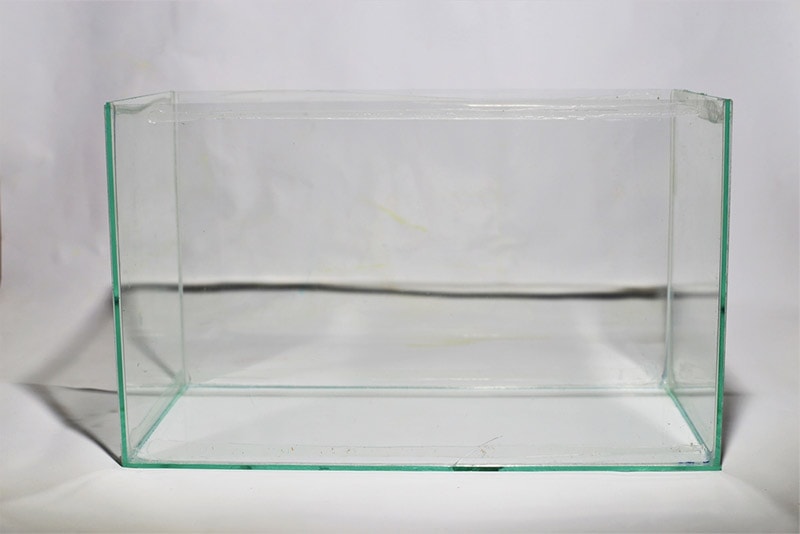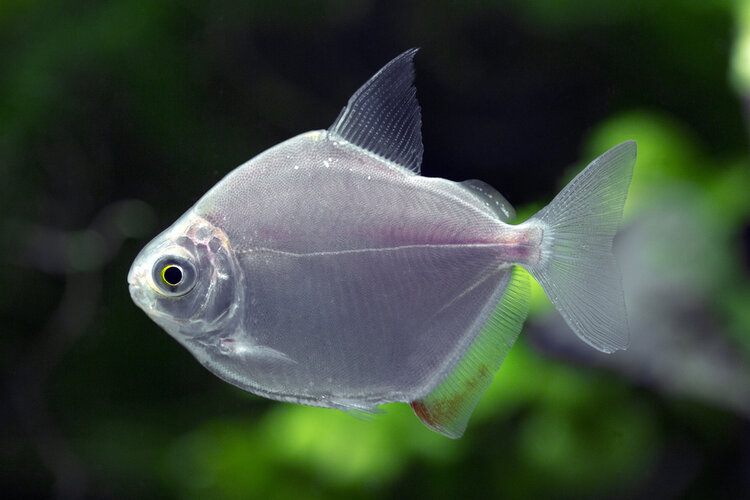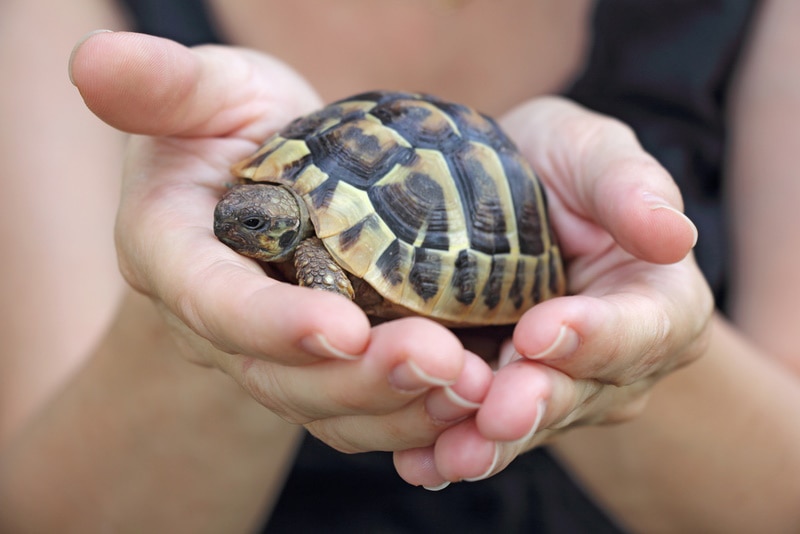Convict Cichlid: Vet-Approved Pictures, Size, Care, Tank Setup, & More
Updated on
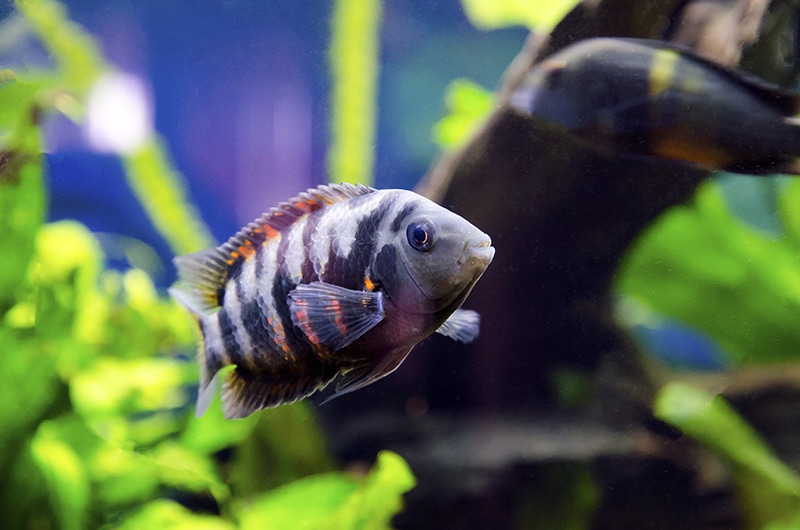
The convict cichlid (Amatitlania nigrofasciata) is a fish species that belongs to the family Cichlidae, which is native to Central America. They’re also known as the zebra cichlid because of their black and white coloration. They have a rather special look and easy care requirements, causing them to be increasingly popular with freshwater aquarists.
Their aggression is often the hardest thing for aquarium keepers to handle, but they’re easily taken care of by those with at least some fishkeeping experience.
For all you need to know about this species, keep reading.
Quick Facts About the Convict Cichlid
| Species Name: | Amatitlania nigrofasciata |
| Family: | Cichlidae |
| Care Level: | Moderate |
| Temperature: | 68-78.8 °F (20-26 °C), breeding requires 86 °F (30 °C) |
| Temperament: | Aggressive and territorial |
| Color Form: | Black and white stripes (with some differently colored varieties) |
| Lifespan: | 8–10 years (estimation) |
| Size: | Up to 6 inches (12.7 centimeters) |
| Diet: | Omnivore |
| Minimum Tank Size: | 30 gallons |
| Tank Set-Up: | Freshwater with driftwood, rocks, caves, and plants |
| Compatibility: | Limited |
Convict Cichlid Overview
This freshwater cichlid is native to Central America. There are several types in the wild found throughout the species’ range. They live in lakes and rivers with a decent current. They prefer areas with lots of driftwood and rocks, which they use as hiding places between feedings. These fish consume just about everything—they aren’t very picky!
These cichlids have become increasingly popular over the years with fish keepers due to their appealing looks. They’re simply very interesting fish to look at, and their care needs aren’t as complicated as other fish, either.
Usually, these fish are captured in the wild and then sold into the pet trade. There has been some concern that their increasing popularity may lead to overfishing and affect wild populations. Their current conservation status is designated as DD (data deficient), meaning there isn’t enough information to assess their wild numbers.

How Much Do Convict Cichlids Cost?
Generally, these fish are pretty inexpensive. You can find them for between $10 and $20, with rarer colorations being more expensive. Where you get these fish matters, too. Purchasing from a specialty breeder is often more expensive than going to your average pet store. However, the fish may be healthier, and rarer colorations may be available.
In the end, these fish are about averagely priced as specialty fish.
Typical Behavior & Temperament
The convict cichlid is quite aggressive. They often do best when kept with very few tank mates, if any. Their aggression is one reason some people have a hard time keeping them. However, as long as you know what to expect, these fish are easier to care for than most. You just need to provide them with enough space and choose the correct tankmates (if you choose any at all).
These fish prefer to hide whenever possible. Therefore, you need to provide rocks, wood, and plants for them to hide in. If you don’t, they may be more likely to lash out. Give them a larger tank with areas to hide to help prevent aggression.
They also tend to move a lot more than other fish, despite liking to hide much of the time. They often prefer to spend their time around the middle of the tank, though they will also check the substrate and even do some digging. They’re interesting fish to own due to their activity levels. They’re known to “redecorate” their aquarium to their liking.
Appearance & Varieties
You’ll usually find these fish in “zebra” form. They have black and white stripes, making them look fairly similar to a zebra. Their pattern and color can vary a bit based on their age and exact genetics, but they almost always have the same general look.
Most of the time, these fish have about eight black bars. However, some may have more, and others may have less. Genetics do play a role. In many cases, fish with well-defined stripes are considered more “perfect” than those with murkier colorations. Therefore, buyers often look at the stripes first, and sellers will price their fish accordingly.
The bars on these fish are always black. However, the rest of their body is gray or blue. They’re often a bit “shimmery,” changing colors as they go under different lighting conditions. The hue varies considerably, sometimes. However, different colorations aren’t defined into different varieties.
Besides their unique coloration, convict cichlids look very similar to other cichlids. They have a large dorsal fin that is semi-transparent. Frequently, their black stripes continue onto this fin, as well. They have average-sized ventral and pectoral fins.
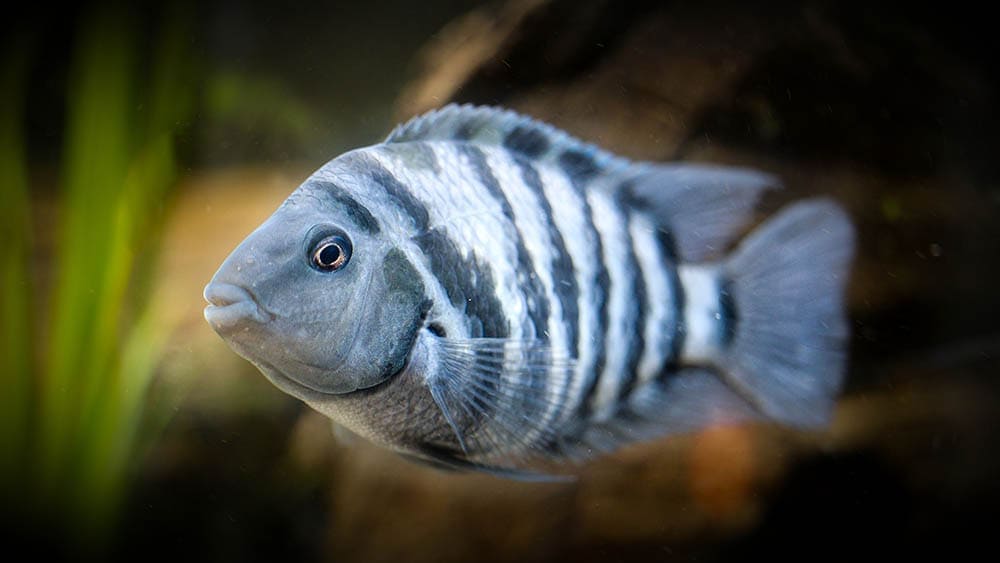
How to Take Care of a Convict Cichlid
Habitat, Tank Conditions & Setup
Tank Size
You should provide your convict cichlid with at least 30 gallons of room. These fish like to roam and need plenty of room to move around and have privacy.
A 30-gallon tank isn’t much more expensive than a 20-gallon tank, either. Therefore, it’s almost always worth investing a few extra dollars as a bigger tank. When you can get bigger than a 30-gallon, we highly recommend doing it, as well. These fish are very active and appreciate more swimming space.
Water Quality & Conditions
Convict cichlids are pretty resilient fish that can withstand many different water parameters. You can get away with a lot, but that doesn’t necessarily mean that you should put their water quality on the back burner. A fish in better water is almost always happier than one in dirty water, after all.
It’s important to get a tank testing kit if you don’t have one already. These kits allow you to test the water pH, ammonia, nitrates, and other chemicals that may affect the life of your fish. Health issues almost always come from poor water quality, so this isn’t something you should skimp on.
The pH should be between 5.5-and 7.8, while the water temperature should be between 68-78.8 °F (20-26 °C). A breeding pair requires temperatures of around 86 °F (30 °C). Interestingly, they are also more aggressive at this temperature (possibly because it triggers breeding and their inherent instinct to protect their eggs and young).
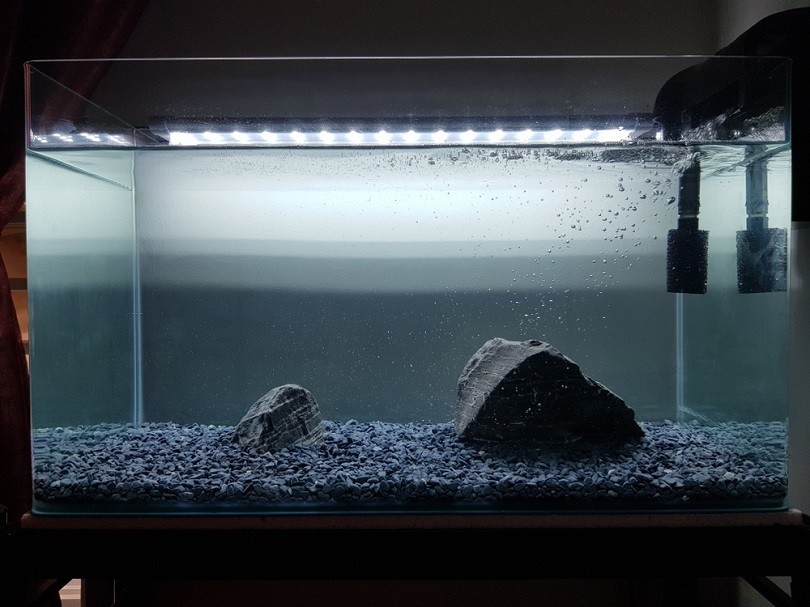
Substrate
These fish do best in sandy substrate, as they like to dig occasionally. They may scratch themselves on a rough substrate like rocks. Beyond that, there aren’t many factors you need to consider with the substrate. For the most part, these fish will stay in about the middle and lower portion of the tank.
Plants
You’ll likely need to put several types of plants in your fish tank. However, strictly speaking, they aren’t an absolute necessity. Whether you choose living plants or fake plants, you’ll want to have an assortment spread throughout the tank to provide enough cover for your fish to hide. Floating plants work well, too. Going with variety is often best.
For living plants, don’t include anything too fragile to handle some digging. Convicts enjoy digging and rooting up plants. Therefore, we highly recommend getting more hardy plants.
On top of plants, also get some wood and rocks, providing extra hiding places.

Lighting
These fish are used to murky conditions, so lighting isn’t a huge deal to them. They spend much of their time hiding in dark places, so many would prefer little light. Most people will want to choose lighting that makes their tank look a bit nicer, though. Fluorescent tubing works best, as incandescent bulbs will release heat and potentially heat the water. If you have live plants though, the lighting would have to cater to the needs of plants.
Filtration
A robust filtration system is important for these fish. They prefer a mellow current, which can be easily achieved by most canister filters. If you are planning on breeding your fish though, a sponge filter will be required, as baby convicts can get sucked into the filter intake of most other filtration systems.
Are Convict Cichlids Good Tank Mates?
No. They are territorial and aggressive. They prefer their territory and aren’t above fighting with their tank mates to get it. While getting a big tank and providing plenty of hiding spaces can help, they are still one of the more aggressive fish out there. They are especially aggressive if they pair up and decide to spawn. In such a scenario, they shouldn’t be housed with other fish (including other convicts).
The safest option you can take is to not get them a tank mate at all. They do best when they are alone. Adding any other fish is always risking a big fight. Keep that in mind!
A male and female convict cichlid combo is a popular option. As mentioned, this pair shouldn’t be kept with any other fish, as their chance of aggression is already higher.

What to Feed Your Convict Cichlids
These omnivores will eat just about anything. They aren’t picky in the least, though this doesn’t mean you shouldn’t be careful with their diet.
They do best on a mixture of pellets with some live food added in. You can use brine shrimp, bloodworms, or a host of other appropriate live foods. This diet is nutritionally adequate and should provide your fish with everything they need to stay well. It can further be supplemented with some forms of plant-based foods too. However, convicts often eat aquarium plants when they feel like foraging on vegetation.
Of course, establish a feeding schedule. These fish are prone to overfeeding, so be sure you’re only giving them enough food to thrive. Many people feed them twice a day, but as long as you’re feeding them the correct portions, it is fine to split their meals into several small “snacks” offered throughout the day.
Keeping Your Convict Cichlids Healthy
These fish are considered relatively hardy. They aren’t prone to any particular diseases, and the ones they can get are associated with poor tank conditions. For instance, they may get things like fin rot, though this doesn’t usually occur in clean water. Therefore, keeping the water clean is one of the most important things you can do to keep your convict cichlid healthy.
It’s a good idea to inspect your fish closely every few days to catch any diseases before they become serious. Early treatment is necessary to prevent complications in many cases. Still, prevention is the best medicine in any case. Keep the water clean and your fish well cared for to prevent most health problems.
Breeding
Breeding these fish is much easier than many think. All you really need is a large enough tank (at least 60 gallons, in this case), a bonded pair, appropriate substrate, additional tanks for your future convicts, and patience. Providing driftwood, an empty flower pot, a rock, or a cave for the female to lay her eggs in is also necessary.
Once you have the tank setup, simply increase the temperature to around 86 °F (30 °C).This temperature increase signals to the fish that it’s time to start breeding. The pair will fertilize the eggs and then work diligently to protect them (so don’t do this in a community tank!).
After about a week, the fry will hatch. Convicts care for their young and therefore shouldn’t be separated from them.
Conclusion
Convicts are interesting cichlids. These fish are pretty aggressive, so they do best when kept alone or in bonded pairs. They simply don’t do well with any other species, as they are prone to becoming territorial. Breeding pairs are particularly aggressive and will flatly attack any other fish that wanders too close.
However, their unique coloration and active nature make these fun fish to keep, even if you can’t keep them with anything else. They’re easy to care for (and easy to breed, too). Therefore, they’re perfect for beginners who don’t mind just keeping a singular fish.
Featured Image Credit: Stanley Kalvan, Shutterstock




